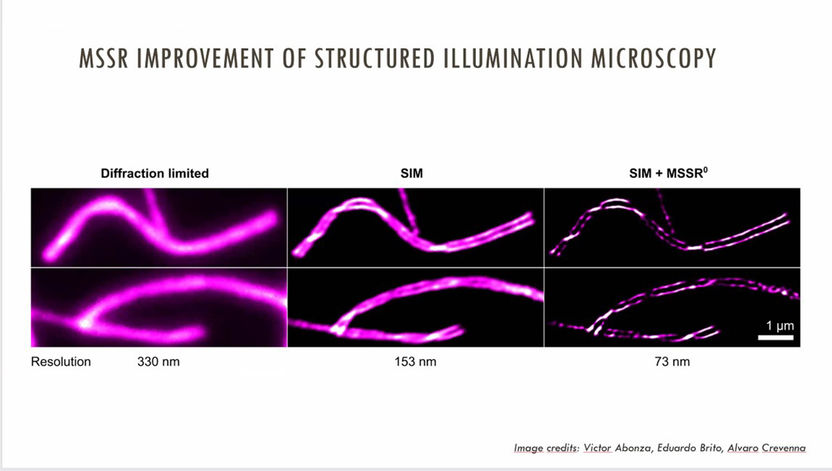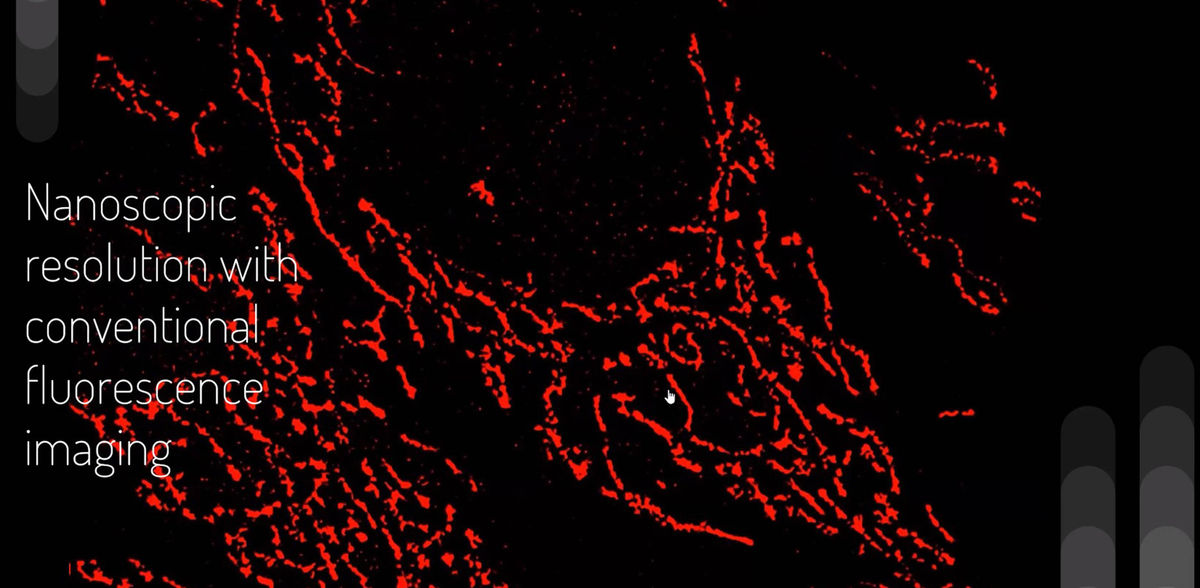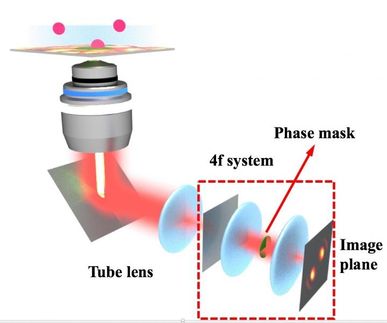UNAM creates algorithm at UNAM that improves fluorescent images with superresolution
It is based on a mathematical function known as "the Mexican hat"; it improves the resolution of optical microscopy images.
Advertisement
Scientists from UNAM's Institute of Biotechnology (IBt) designed an algorithm that, when incorporated into computers that already process fluorescence images taken with an ordinary microscope, makes it possible for them to acquire a quality comparable to that obtained with large and expensive super-resolution equipment.

UNAM
Adan Oswaldo Guerrero Cárdenas, project leader and researcher at the National Advanced Microscopy Laboratory (LNMA), explained that the algorithm called Mean Shift Super Resolution (MSSR) can be used in fluorescence microscopes, where cells are stained with dyes; a type of image that requires a computer to process.
The level of resolution obtained with the algorithm makes it possible to study aspects associated with subcellular organization and, for example, to clearly identify the mitochondria (related to cell energy), which is useful for recognizing pathologies linked to failures in these structures, such as acute breathing problems, he explained.
"We are talking that in 2022 the magazine published thousands of articles and, of all those, ours has had a very big impact on the community. If we think about countries like Mexico or all of Latin America, the technology that allows us to do super-resolution microscopy is rarely found in developing countries and what we create is a technology that allows nations to develop knowledge without the need for expensive instruments, which can transform the way science is done in Latin America, Africa and other places," commented the optics and image analysis specialist.
Establishing synergies
For Guerrero Cárdenas and his team, the most important thing is to teach other experts to use the technology in order to generate a virtuous cycle of discoveries that will have a favorable impact on society.
He added that they received support from the Chan Zuckerberg Initiative Foundation, a philanthropic organization founded by the creator of Facebook, Mark Zuckerberg, and his wife, Priscilla Chan, to bring technology to Latin America. The project promotes the creation of workshops where people are taught how to use the technology developed at LNMA and value the impact on their research, as well as exchange programs to familiarize them with microscopy.
This project complies with four of the 17 Sustainable Development Goals of the United Nations, because we are generating quality education. In the courses we try to have a gender balance in the attendees, we are creating more technology and the generation of knowledge will reduce the inequalities that exist in different places. Dissemination is a collaboration project between Mexico and Argentina to establish synergies at an international level that will allow the progress of the communities, he said..
Note: This article has been translated using a computer system without human intervention. LUMITOS offers these automatic translations to present a wider range of current news. Since this article has been translated with automatic translation, it is possible that it contains errors in vocabulary, syntax or grammar. The original article in Spanish can be found here.
Original publication
“Extending resolution within a single imaging frame”; Nature Communications, 2023.
Other news from the department science
Most read news
More news from our other portals
See the theme worlds for related content
Topic world Fluorescence microscopy
Fluorescence microscopy has revolutionized life sciences, biotechnology and pharmaceuticals. With its ability to visualize specific molecules and structures in cells and tissues through fluorescent markers, it offers unique insights at the molecular and cellular level. With its high sensitivity and resolution, fluorescence microscopy facilitates the understanding of complex biological processes and drives innovation in therapy and diagnostics.

Topic world Fluorescence microscopy
Fluorescence microscopy has revolutionized life sciences, biotechnology and pharmaceuticals. With its ability to visualize specific molecules and structures in cells and tissues through fluorescent markers, it offers unique insights at the molecular and cellular level. With its high sensitivity and resolution, fluorescence microscopy facilitates the understanding of complex biological processes and drives innovation in therapy and diagnostics.



















































